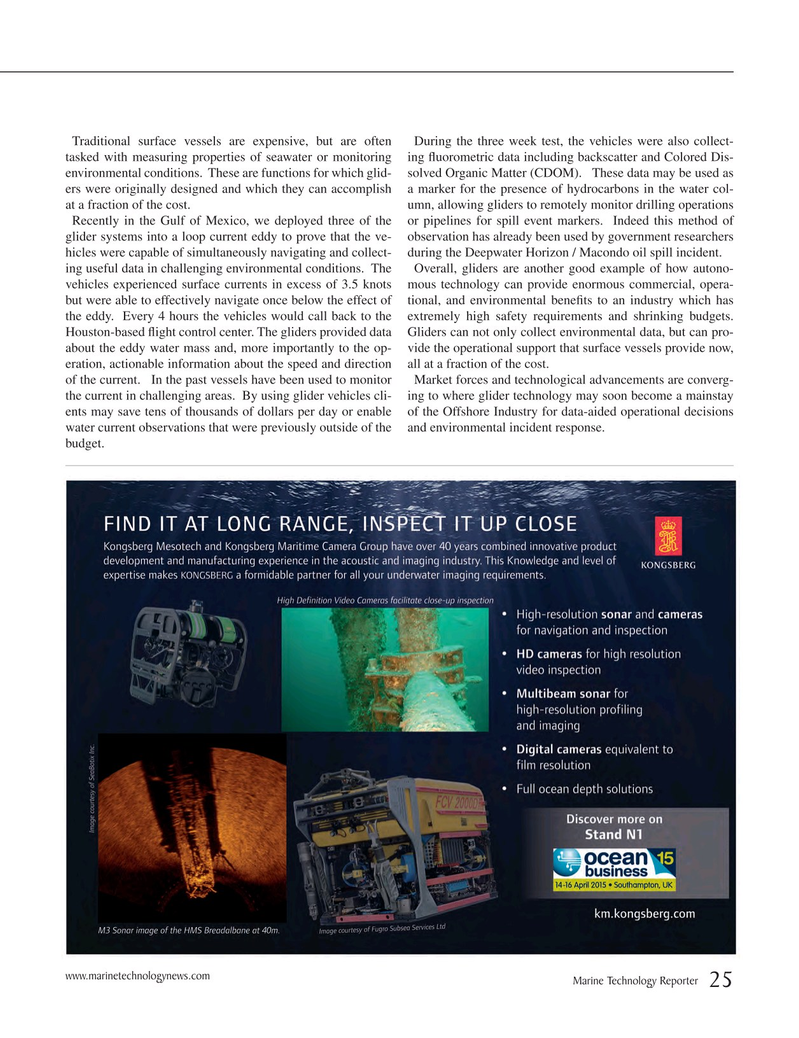
Page 25: of Marine Technology Magazine (March 2015)
Oceanographic Instrumentation: Measurement, Process & Analysis
Read this page in Pdf, Flash or Html5 edition of March 2015 Marine Technology Magazine
Traditional surface vessels are expensive, but are often During the three week test, the vehicles were also collect- tasked with measuring properties of seawater or monitoring ing ? uorometric data including backscatter and Colored Dis- environmental conditions. These are functions for which glid- solved Organic Matter (CDOM). These data may be used as ers were originally designed and which they can accomplish a marker for the presence of hydrocarbons in the water col- at a fraction of the cost. umn, allowing gliders to remotely monitor drilling operations
Recently in the Gulf of Mexico, we deployed three of the or pipelines for spill event markers. Indeed this method of glider systems into a loop current eddy to prove that the ve- observation has already been used by government researchers hicles were capable of simultaneously navigating and collect- during the Deepwater Horizon / Macondo oil spill incident.
ing useful data in challenging environmental conditions. The Overall, gliders are another good example of how autono- vehicles experienced surface currents in excess of 3.5 knots mous technology can provide enormous commercial, opera- but were able to effectively navigate once below the effect of tional, and environmental bene? ts to an industry which has the eddy. Every 4 hours the vehicles would call back to the extremely high safety requirements and shrinking budgets.
Houston-based ? ight control center. The gliders provided data Gliders can not only collect environmental data, but can pro- about the eddy water mass and, more importantly to the op- vide the operational support that surface vessels provide now, eration, actionable information about the speed and direction all at a fraction of the cost. of the current. In the past vessels have been used to monitor Market forces and technological advancements are converg- the current in challenging areas. By using glider vehicles cli- ing to where glider technology may soon become a mainstay ents may save tens of thousands of dollars per day or enable of the Offshore Industry for data-aided operational decisions water current observations that were previously outside of the and environmental incident response.
budget. www.marinetechnologynews.com
Marine Technology Reporter 25
MTR #2 (18-33).indd 25 MTR #2 (18-33).indd 25 3/8/2015 2:34:28 PM3/8/2015 2:34:28 PM

 24
24

 26
26
